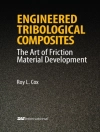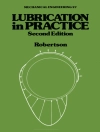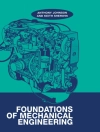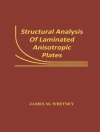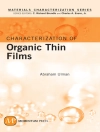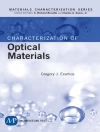This book collects original peer-reviewed papers describing the latest developments in railway noise and vibration from the 14th International Workshop on Railway Noise (IWRN14), held on 7–9 December 2022, in Shanghai, China. It covers a broad range of railway noise and vibration topics, including high-speed rail and aerodynamic noise, wheel and rail noise, curving squeal noise, bridge noise, vehicle interior noise, structure-borne noise, and ground-borne vibration. Further topics such as resilient track forms, wheel out-of-round and polygonalization, rail roughness, corrugation and grinding, etc. are also covered. With the extensive and timely information offered, this book helps scientists and engineers in their daily efforts to identify, understand, and solve problems related to railway noise and vibration and to achieve the ultimate goal of minimizing the environmental impact of railway systems.
विषयसूची
Keynote Lectures.- Predictions, Measurements, Monitoring and Modelling.- High-Speed Rail and Aerodynamic Noise.- Wheel Out-of-Round and Polygonalisation.- Rail Roughness, Corrugation and Grinding.- Wheel and Rail Noise.- Squeal Noise.- Interior Noise.- Structure-Borne Noise and Ground-Borne Vibration.- Resilient track forms.- Bridge Noise and Vibration.- Pantograph-Catenary System Vibration.
लेखक के बारे में
Xiaozhen Sheng completed his Ph.D. in 2001 at the Institute of Sound and Vibration Research (ISVR), University of Southampton, and stayed there as a research fellow until 2004. At ISVR, he developed the two-and-half dimensional finite and boundary element method for modelling ground vibration generated from railways. He then spent ten years in the industry, first for Cummins Turbo Technologies Co. Ltd in the UK and then for Hunan Tyen Machinery Co. Ltd in China, working on turbomachinery noise and vibration. In the end of 2014, he joined State Key Laboratory of Traction Power, Southwest Jiaotong University, supervising M.Sc. and Ph.D. students to research on every aspect related to railway noise and vibration. He has worked on a number of multi-million projects sponsored by China’s Ministry of Science and Technology and National Natural Science Foundation and China Railway, supporting the development of China’s high-speed railways.
David Thompson graduated in Mathematics from the University of Cambridge in 1980 and received his Ph.D. from the ISVR, University of Southampton in 1990. He joined the ISVR as a lecturer in 1996 and became a professor of Railway Noise and Vibration in 2004. He is a fellow of the Institute of Acoustics and fellow of the Institution of Mechanical Engineers. Professor Thompson is a leading international expert in the field of railway noise and vibration. His research covers many aspects of this field including rolling noise, squeal noise, ground vibration and aerodynamic noise. He has supervised 46 Ph.D. students to completion and published over 200 refereed journal papers and over 250 conference papers. In 2018, he was awarded the Institute of Acoustics Rayleigh Medal for outstanding achievements in acoustics.
Geert Degrande is professor at the Department of Civil Engineering of KU Leuven in Belgium. He obtained his master and Ph D degree in 1986 and 1992 from KU Leuven. He was avisiting researcher at Princeton University in 1989 and postdoctoral researcher at Ecole Centrale de Paris in 1994. He became assistant professor in 1995 and full professor in 2005. He was head of the Department of Civil Engineering from 2008 until 2016 and presently is head of the Structural Mechanics Section. He was Visiting Fellow at Peterhouse and Academic Visitor at the Department of Engineering of the University of Cambridge during the Michaelmas Term 2022. He is teaching courses on theory of elasticity and plasticity, dynamics of structures, wave propagation and vibration in the built environment, and non-linear structural analysis. His main research interests are structural dynamics, dynamic soil-structure interaction, elastodynamics, computational mechanics, and inverse problems. Emphasis is going to vibration problems in the built environment due to road and railway traffic, industry and construction activities, using both numerical and experimental methods. He has supervised 20 Ph D students to completion and published over 110 refereed journal papers and over 280 conference papers.
Jens Nielsen graduated in Mechanical Engineering from Chalmers University of Technology (Gothenburg, Sweden) in 1988. He received his Ph.D. and Docent degrees from the Department of Applied Mechanics at Chalmers in 1993 and 2000, respectively. He has been a senior member of the research team in the National Centre of Excellence CHARMEC (Chalmers Railway Mechanics) since 1997 and became a professor of Railway Dynamics in 2018. Professor Nielsen is a leading international expert in dynamic vehicle–track interaction applications, such as track design optimization, rail corrugation and out-of-round wheels, railway noise, track geometry degradation, and switches and crossings.
Pierre-Etienne Gautier worked at Centrale Supélec Paris, which brings together two leading engineering schools in France (Ecole Centrale Paris and Supélec). He has been working in the field of railway for many years. His research mainly focuses on transportation noise, including noise analysis, acoustic emission, acoustic signal processing and so on. Besides, he has studied on railway scheduling and transport management.
Kiyoshi Nagakura received his B.E. degree in Mathematical Engineering from the University of Tokyo, Japan, in 1990, and the Ph.D. degree in Architecture from the University of Tokyo in 2002. Since April. 1990, Dr. Nagakura has been in Railway Technical Research Institute as a researcher in Noise Analysis Laboratory and successively as a laboratory head, a division director, and a principal researcher. Dr. Nagakura focuses on the research on railway noise, including aerodynamic noise, sound barrier, measurement technique, noise prediction model, etc. Dr. Nagakura has published several journal papers and conference papers and has contributed to technical handbook chapters on acoustics and aerodynamics. He has participated in committees on railway noise hosted by the Ministry of the Environment in Japan and contributed to publishing a prediction model of high-speed railway noise, manual for the measurement and evaluation of railway noise, etc.
Ard Kuijpers received his degree on Mechanical Engineering at the Eindhoven University of Technology (NL) in 1994 and his Ph.D. in 1999. He has worked at M+P since 1999 and is currently a senior consultant and managing director. He is responsible for all R&D activities at M+P. His professional interest lies in the vibro-acoustics of tyre/road and wheel/rail interaction: to understand the processes with the aid of physical and statistical modelling and machine learning and to develop dedicated measurement systems to characterize the sources and parameters that play a role in road and railway traffic noise. Besides working on the fundamentals of rolling noise and vibrations, he is active in the design and development of practical software systems to estimate, monitor, control and mitigate the impact on the society of noise and vibration from road and rail transport.
James Tuman Nelson works at Wilson, Ihrig & Associates, Emeryville, USA. He is an expert in acoustic engineering, civil engineering, and structural engineering. His work is mainly on the acoustics, like wave propagation, noise analysis, acoustic simulation, computational acoustics and so on.
David A. Towers received his B.S. degree in Mechanical Engineering from Columbia University in 1972 and his M.S. degree in Mechanical Engineering from Purdue University in 1973. Since 2015, he has been a principal associate at Cross-Spectrum Acoustics Inc. Mr. Towers is a registered professional engineer in five U.S. states and is a fellow and board-certified member of the Institute of Noise Control Engineering. With over 45 years of experience as an acoustical engineer, Mr. Towers specializes in noise and vibration control for rail transportation systems and has participated in a wide range of railway projects in the U.S. and abroad. He is a co-author of two U.S. rail transportation agency guidance documents for noise and vibration impact assessment, including the Federal Transit Administration manual for transit projects and the Federal Railroad Administration manual for high-speed ground transportation projects.
Dave Anderson works at Acoustic Studio in Australia as acoustic engineer and director. He received M. Eng degree in Acoustics and Vibration, and is member of the Australian Acoustical Society, the Institute of Acoustics (UK), and the International Committee for the International Workshop on Railway Noise,
Thorsten Tielkes is based in Munich, Germany. He is a co-organizer of Bahnakustik, the German conference on railway acoustics since 2014. He has been a member of the International Committee for IWRN since IWRN 11 in 2013 and presently, the head of Co C Aerodynamics and HVAC at DB Systemtechnik Gmb H, the engineering and testing division of DB.



